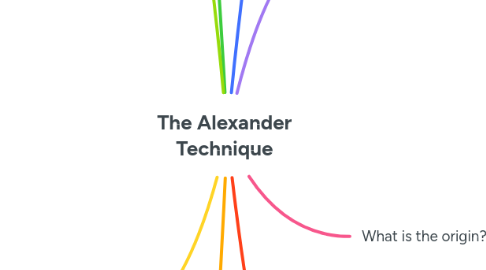The Alexander Technique
作者:Amanpreet Banger


1. What are the core principles of the Alexander Technique?
1.1. To make changes and reap benefits, you must become more conscious of how you go about your daily activities.
1.2. The relationship between your head, neck, and spine is critical to your ability to function optimally.
1.3. Backache, neck and shoulder pain, and other types of long-term joint injuries are frequently the result of misusing our bodies over time, such as moving inefficiently and standing or sitting with our weight unevenly distributed.
1.4. The mind and body are inseparably linked, with each constantly influencing the other.
2. The main focus of this technique is a form of education that is able to recognise and overcome reactive, habitual limitations in movement and thinking.
2.1. How you move, sit, and stand has an impact on how well you function. The mind and body are inseparably linked, with each constantly influencing the other.
3. exercises that support that alexander technique
3.1. Standing up is an exercise that reduces tension. Let go of the muscular tension in your neck and notice your head will naturally rotates forward and goes up. Sit down. Get back up, move your feet back a bit. Hinge forward using your hip joints. Your hip joints are where your legs meet your torso. When your weight is sufficiently over your feet, send your feet into the floor and come up to your full height. It's meditation for the body.
3.2. Sitting down reduces tension. Don't keep your knees locked. Send your knees forward, and your hip joints back. As you do this seemingly simple movement, notice if your neck and lower back immediately get involved. After your butt reaches the chair wait a second and then hinge back, using your hip joints.
3.3. The fingertips rule exercise - start with your hands by your sides. Commonly, when lifting our hands, we start the movement with the big muscles of the shoulder or arm and tend to hold on to that extra tension. Instead, as you initiate the movement of lifting your hand, imagine lifting your fingertips only.
3.4. Whisper Ahh - when you exhale, whisper a slow, controlled 'ahh'. When you run out of breath, inhale slowly through your nose. Let the jaw be comfortably open whilst you inhale, doing that releases tension in the jaw. Think of something funny, or pleasant as you do this exercise, it adds ease, openness, and raises your soft palate.
3.5. Constructive Resting - You've got to lie down on a hard surface. Bend your knees, and have your feet flat on the floor. Instead of using a pillow as you would for sleeping, put a few paperback books under you head. Let gravity take over, and your torso will lengthen and widen. Just 10-15 minutes per day of constructive rest can help greatly. Constructive rest pairs nicely with a whispered ahh.
4. In what situations can the alexander technique?
4.1. Teachers of the Alexander technique believe it relieves back pain, neck pain, sore shoulders, and other musculoskeletal issues by releasing tension in the body. So situations like just before a show, aiming for high notes, etc, are all situations that this technique can be used in.
5. How is this technique effective/how does it help performers?
5.1. This could help an actor widen there forte with specific mannerisms, leading to them being more versatile in contrasting roles (e.g., American high school jock, autistic sibling, science nerd) which also aids to this Stanislavski method.
6. What is the Alexander Technique?
6.1. The Alexander Technique's main goal is to get actors, even athletes more comfortable by reducing stress so they are willing to go out of their comfort zone and perform to the best of their ability.
6.2. Instructors who specialize in the ‘Alexander Technique’ teaches you how to loosen up, recognise the bad habits that you’ve picked up over time from many different experiences, undo those bad habits and re-learn how to move around but more freely.
7. What is the origin?
7.1. The technique was developed in the 1890s by Frederick Matthias Alexander. He was an actor from Australia who's promising acting career was being threatened by recurring vocal problems. So he decided to focus on health of a performer rather than the technique to help a performer become more skilled.
7.1.1. The Alexander technique helps people find new balance in their bodies by releasing unnecessary pressure. It can be used while sitting, lying down, standing, walking, lifting, and doing other exercises.It is not a series of treatments or exercises, but rather a process of internal and physical healing. The Alexander technique helps people find new balance in their bodies by releasing unnecessary pressure.
